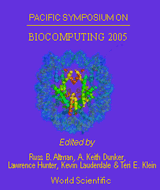Identification of functional modules in protein complexes via hyperclique pattern discovery
Xiong H, He X, Ding C, Zhang Y, Kumar V, Holbrook SR
Computer Science & Engineering, University of Minnesota, MN, USA. huix@cs.umn.edu
Pac Symp Biocomput. 2005;:221-32.

Abstract
Proteins usually do not act isolated in a cell but function within complicated cellular pathways, interacting with other proteins either in pairs or as components of larger complexes. While many protein complexes have been identified by large-scale experimental studies, due to a large number of false-positive interactions existing in current protein complexes 10, it is still difficult to obtain an accurate understanding of functional modules, which encompass groups of proteins involved in common elementary biological function. In this paper, we present a hyperclique pattern discovery approach for extracting functional modules (hyperclique patterns) from protein complexes. A hyperclique pattern is a type of association pattern containing proteins that are highly affiliated with each other. The analysis of hyperclique patterns shows that proteins within the same pattern tend to present in the protein complex together. Also, statistically significant annotations of proteins in a pattern using the Gene Ontology suggest that proteins within the same hyperclique pattern more likely perform the same function and participate in the same biological process. More interestingly, the 3-D structural view of proteins within a hyperclique pattern reveals that these proteins physically interactwith each other. In addition, we show that several hyperclique patterns corresponding to different functions can participate in the same protein complex as independent modules. Finally, we demonstrate that a hyperclique pattern can be involved in different complexes performing different higher-order biological functions, although the pattern corresponds to a specific elementary biological function.
[Full-Text PDF] [PSB Home Page]